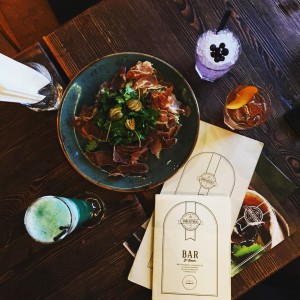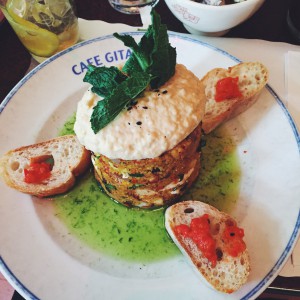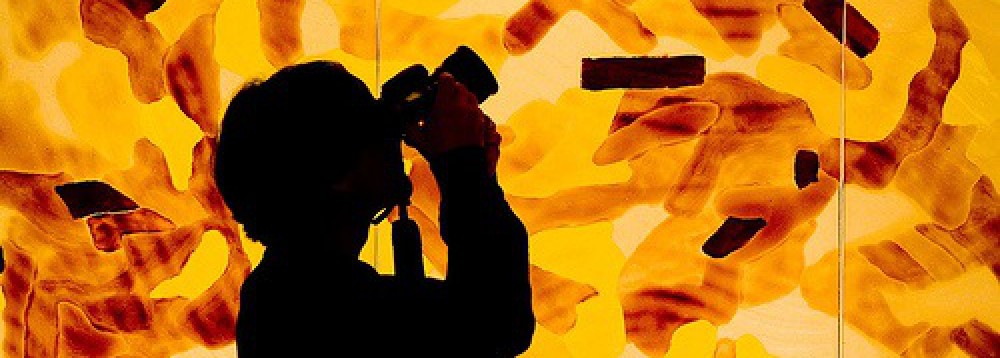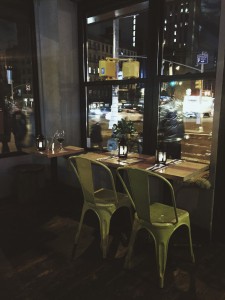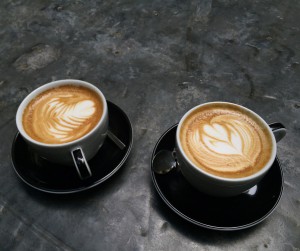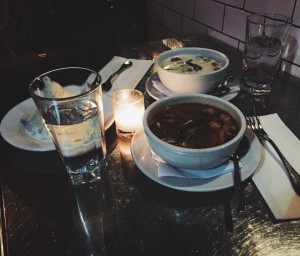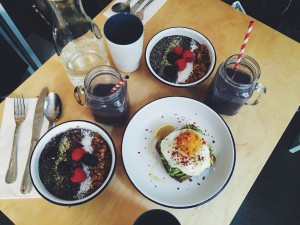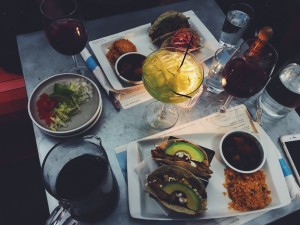Henry Hargreaves’s photo series is truly interesting work that requires a big thought and/or effort to it. I love the way photographs are set up, the arrangement reminds me of a still life commercial or editorial. There is a great sharp contrast between a dark background and the subject in every shot. I agree with the photographer, these works do offer us a glimse into the celebrities’ lives and portray the famous musicians’ personalities. Every performer’s decription is very specific, which make them all different so we can actually identify some of these people. I also have noticed that the foods celebrities request are quite unhealthy. It must be some kind of comfort foods that help them ease the nerves before performing.
Author Archives: Polina Savchenko
HW 9: Robert Frank
I think that Robert Frank’s photographs are artistic. They are some sort of a metaphor of the relationship between one individual and whole nation. To him, artistic is simple. In his works, Frank tries to bring out the idea of one person being a buidling block of the society and how one could relate to a country as a whole. His themes consist of ordinary and lonely people, politics and religion. Robert Frank’s goal is to figure out what the world is like so he uses the photography to share his personal vision with others.
HW #8: Capa’s “Death of a Loyalist Soldier”
Over the years, people have argued that Robert Capa’s “Death of a Loyalist Soldier” is a staged photograph and I can clearly see why they doubted its authenticity. In the shot, the Spanish soldier appears to be falling back after being hit by a bullet and shot at the moment of death. It is truly amazing how Capa was able to capture that exact moment and this is a reason why it is hard for the viewers to believe that the shot was real and just captured at the right time at the right place. I personally believe Capa didn’t stage the shot. To me, the most effective reason why the photograph is real is the soldier’s position, the way he is falling back and his face expression which portrays real pain. In fact, the photographer put his own life at risk when going to the battle fields to get true photographs and document what was happening during the Spanish war. This is a photojournalism, not fake.
HW 7: Food Photography – Art or Marketing
From the article “Food InstagrammersTurn Accounts Into Professions” of the Wall Street Journal, it is exciting to see how professional instagrammers have been taking the food photography to a new level. They combine both art and advertizing which makes their job fun and adventurous, at the same time, makes them recognized among other bloggers.
Food Photography can be looked at either as an art or marketing form. Food photography art is meant for the photographers to express their creativity and personal vision as well as for the vievers to enjoy. Food photography for maketing is to advertize the dish itself and make potential customers come into the place. To me, photography of food that is used in marketing and advertizing is meant to be more exaggerated, more fancy since it is used to bring more eyes drawn to it. It is all about making pictures look good enough to eat and to compel people to order the food being shown. While the art form of food photography could be left as it is to showcase the naturality and simplicity to be appreciated as an art. I personally take pictures of diiferent spots such as restaurants, coffeeshops, luncheonettes as wll as dishes and drinks they offer which in my opinion represent my own art and vision of certain objects and places. It feels good when friends of mine or other people who just follow my account give a feedback of the places I post. It is kind of informative and interesting to see others’ opinions and see what styles of kitchen or places seem to them most enjoyable to visit. It is a learning experience for all.
Speaking of marketing and art forms of the photography of food, I don’t prefer one over the other. Everyone takes pictures for their own purpose but we all do it to share our experience with others.
HW 6: Picturing Breakfast Around The World
In my culture, children are always told: “Eat breakfast yourself, share lunch with a friend and leave dinner for an enemy”. I grew up following this phrase and I can’t imagine a good day without having a breakfast. In American society, especially if living in NYC, during a busy morning, it’s easy to let breakfast fall low in your list of priorities, but just a few minutes to make something easy but filling to eat can really make a difference to your day. Breakfast provides the body with fuel and energy after an overnight fast. It is a good source of important nutrients and vitamins such as calcium, protein, iron and many more. While reading the New York Times article “Rise and Shine” about what kids around the world eat for breakfast, I was amazed how the world cultures can differ from each other presenting such a wide variety of the meals consumed by people from different countries. Yet, most of them have displayed that having breakfast is important. Many studies of children have shown that it is the best way to improve memory and concentration levels as well as attainment, behavior and better grades. I believe that fruit and vegetables contain daily portion of vitamins and minerals so I try to include them in my meal to get through m y day.
y day.
Quince and Chia Greek Yogurt
HW 5: Subway Portraits
It’s amazing and unique how Walker Evans came up with an idea of hiding the camera under his coat to capture people in the subway lost in their own thoughts and moods. It’s interesting to think about different people’s everyday routines, where they all go, what they do and who they are. Evans made a good decision keeping everyday commuters unaware of him taking photographs because when we all see a camera we naturally pose hiding our true face expressions and this would ruin the whole point of his style of photography. Walker Evans managed to capture the passengers on the NYC subway minding their own business in these unguarded moments, displaying a range of human emotions. He has created unposed portraits.
I’m my opinion, not much has changed from the time Evans took these photographs. Nowadays, the majority travels in the subway train with the same face expression which usually makes others feel like they don’t want to be bothered. We all use the subway rushing to get to our destinations, at the same time unwittingly people-watching.
HW 4: Food and Status in History
I believe food has become a significant part of people’s lives and it helps in bringing them together. Food promotes diversity and tolerance because it is a universal language that brings all different cultures close. Therefore, dining is an important part of any event such as weddings, birthday celebrations, business meetings, and even everyday family dinners. Especially nowadays, it has become a tradition that gives us the opportunity to gather, share, connect with other people and present ourselves to them over food. The preparation of food also helps bring people together and it is often one of the traditional experiences that bind family generations together.
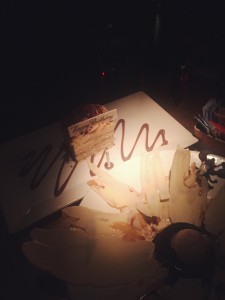
HW 3: Photographing Texture in Food
Food photography is all about texture and color. It is crucial to have a nice “feel” when looking at the image. The human eye can look at something and see details that the camera most likely can not capture so the photographer must use lighting to bring out the texture in order to make the dish look appeling and inviting. This is a picture of a Greek Moussaka – an eggplant-based dish, often including ground beef and tomatoes with cheese on top. My friend and I took this photograph while attending Smogasburg food market in Industry City Studios in Sunset Park. Moussaka has a delicious taste to it. Very tender, juicy and smooth. Grilled cheese and tomatos on top make the dish very appertizing. 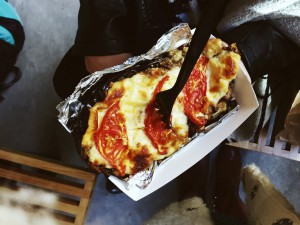
HW 2: Food and Coffee in Civil War
It is fascinating how a caffeine addiction remained as one of the things that have been adapted from the times of the Civil War. Coffee was prevalent on the battle fields as it is in offices and schools nowadays. Without a doubt, coffee played an important role keeping soldiers awake and warm. Besides caffeine cravings, to get through the day, soldiers consumed a lot of coffee because it was the best thing out of everything they had. Typically, their meals consisted of salted meat, unleavened bread called “hardtack” and a little salt and sugar. One of the most imporant factors was also that coffee beans lasted for long and didn’t need any particular kind of preservation which enabled soldiers to carry it around. I personally am dependent on coffee. I love espresso drinks, essentially iced. It does not give me that much of an energy as it used to before, but it is definitely something I need to have everyday.
Homework 1: Why Food Photography
Taking pictures of food has become a big part of the photography field. Nowadays, people take pictures of their meals to express creativity and showcase their personal vision of the subject. Jean Anthelme Brillat-Savarin’s statement “Tell me what you eat, and I will tell you what you are” clearly reflects that different people from different cultures see and eat food differently. Food photography is significant in sharing and introducing people to new venues and cuisines. It reveals to what, when and how we eat. By photographing food with our cameras we represent our traditions and customs to other countries around the globe. It is also a great way to introduce your family and friends to places around. In fact, we all go online to check out all different places before we go out to eat. We like to see the restaurant’s dishes, interior and decor through other people’s photos first. Food photography also plays a huge role in advertising for the restaurants. It is all about the first impression that a customer gets and having good pictures can make a big difference for 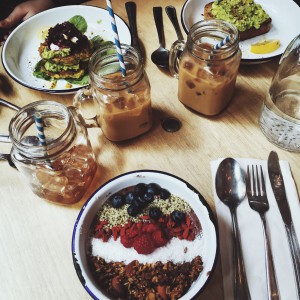 the business. The phrase, “People eat with their eyes”, is very relevant. Most people like to see the photograph of the dish before they order so they know exactly what they are getting, and for those from different culture who are not familiar with the cuisine it is even more important. I take pictures of food myself. I personally enjoy the art of food photography because I truly believe that it is a powerful language that speaks to people’s taste receptors and emotions. It allows me to tell my story and show others my own view on food culture.
the business. The phrase, “People eat with their eyes”, is very relevant. Most people like to see the photograph of the dish before they order so they know exactly what they are getting, and for those from different culture who are not familiar with the cuisine it is even more important. I take pictures of food myself. I personally enjoy the art of food photography because I truly believe that it is a powerful language that speaks to people’s taste receptors and emotions. It allows me to tell my story and show others my own view on food culture.